Life and the Environment
Daijiang Li
LSU
Announcements
An understanding of the physical environment is key to understanding all ecological phenomena
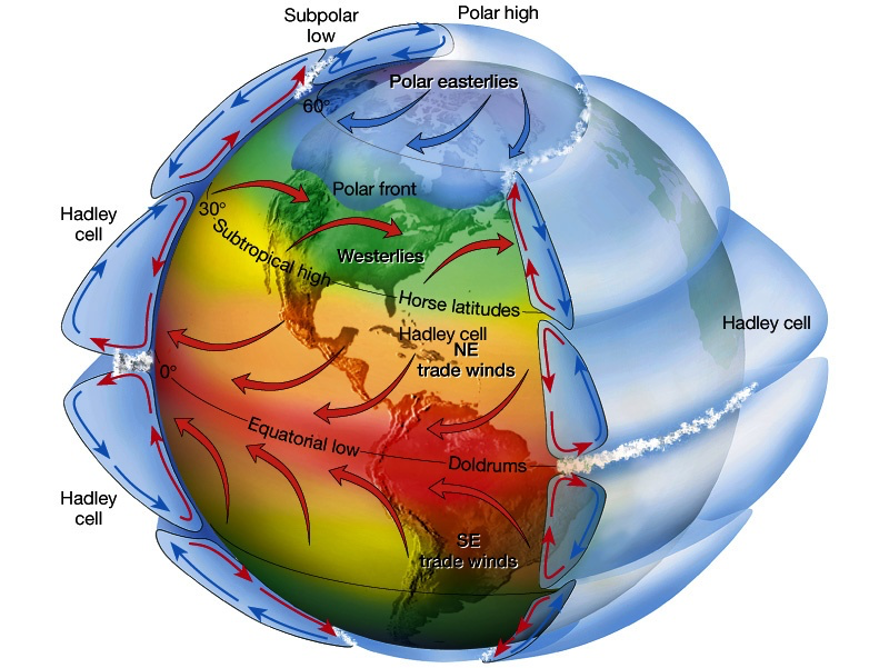
Biomes
Biomes
Large-scale biological communities sharing similar plant growth forms; often owing to convergent adaptations to similar physical environments; determined largely by temperature and rainfall (climate)

how does a particular environment result in similar plants? selective pressure lead to similar functional traits through evolution
why defined by plants? plants form the foundation of life on earth; they are primary producers
Primary productivity on Land

Primary productivity in Oceans
Almost half of all primary productivity on Earth

Ecoregions (867 distinct ones)

Olson et al 2001 Bioscience
Other factors such as soil types and elevation can also have strong influences
how many biomes depends on who do you ask; or how different to go
Major Determinants of Global Climate
1. Spherical shape of the earth: uneven heating

while the global distribution of biomes is determined by climate, what determines the distributions of climate?
Major Determinants of Global Climate
2. Revolution of the Earth around the Sun on a tilted axis (seasons)

Seasons

What is the main cause of winds?
a. the rotation of the earth around the sun
b. the rotation of the earth on its axis
c. the differential heating and cooling of different geographical locations on earth
Hot air expands & rises
As air rises, it expands and cools
Wind is caused by differential heating of the Earth’s surface

Wind is caused by differential heating of the Earth’s surface
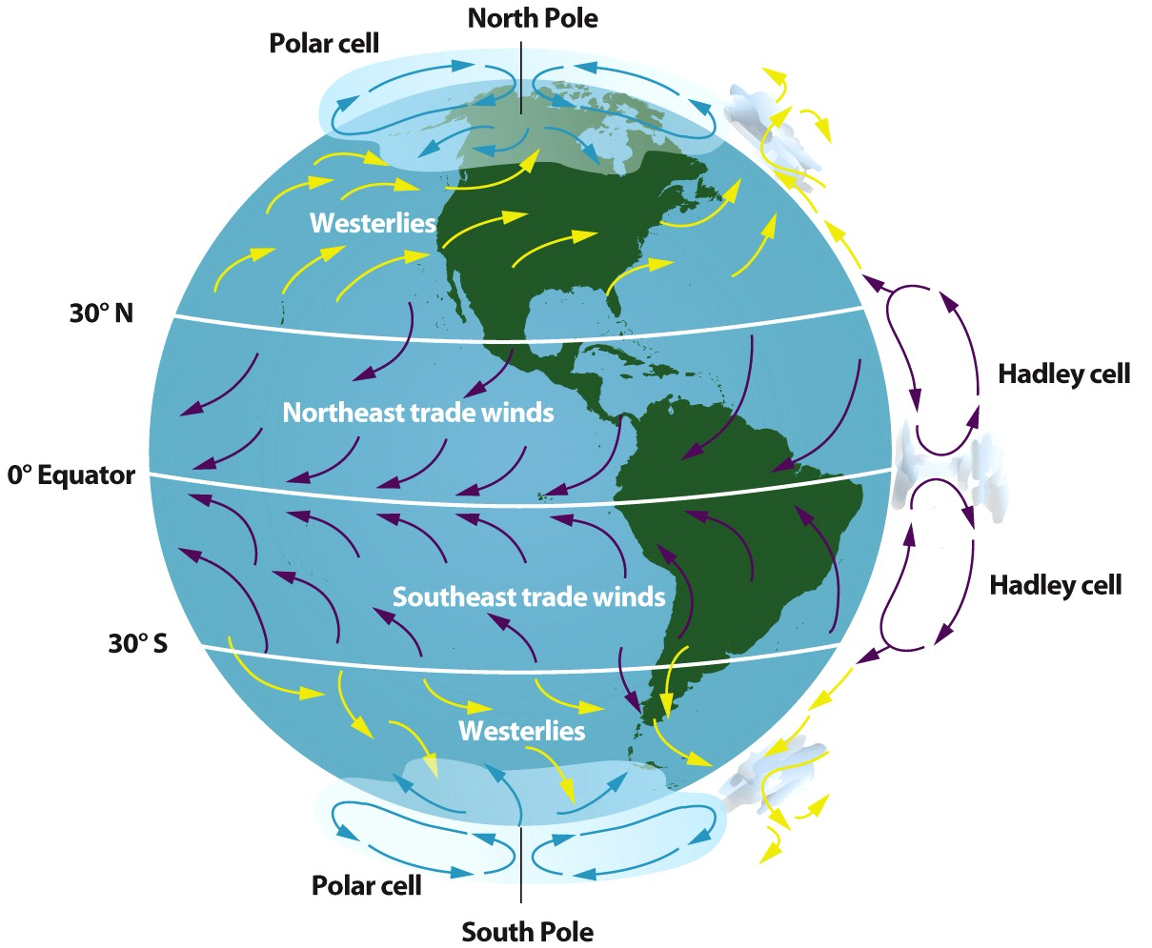
Major Determinants of Global Climate
3. Rotation of Earth around Earth’s axis. Creates Coriolis effects (conservartion of momentum)


Air circulation patterns (surface)
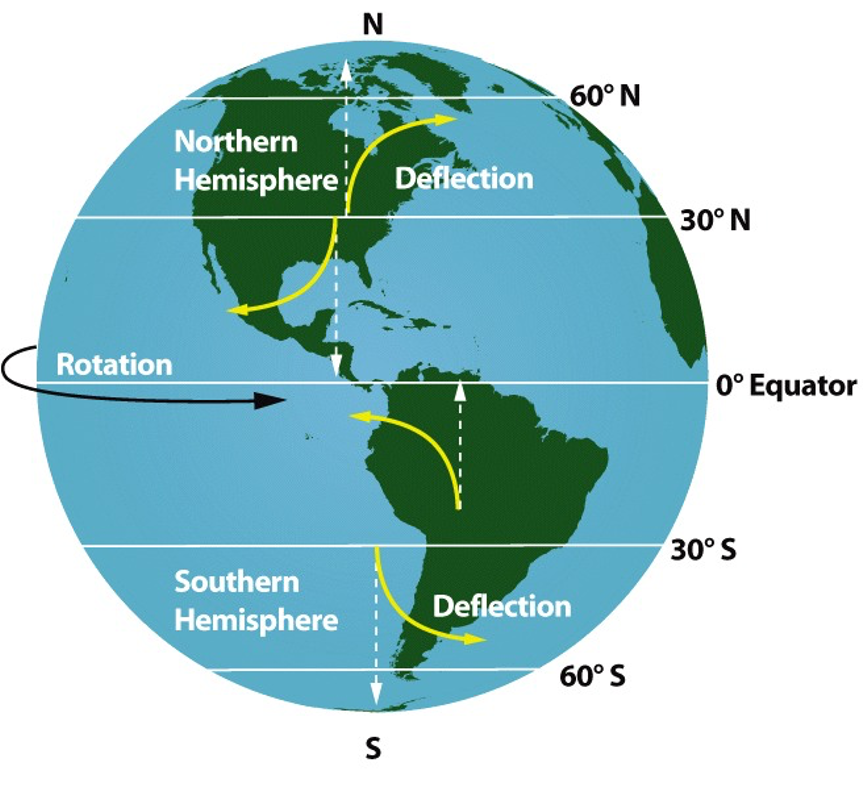

Ocean currents are driven by winds and redistribute heat, and modified by Coriolis effects

Rising warm airs --> Rain


Why does it rain on the windward side of mountains, and why is it dry on the leeward side?

Kauai 22° N
Rain shadow effect

Rain shadow effect
Climate and World Biomes
Terrestrial biomes largely determined by temperature and precipitation
Tropical rain forests
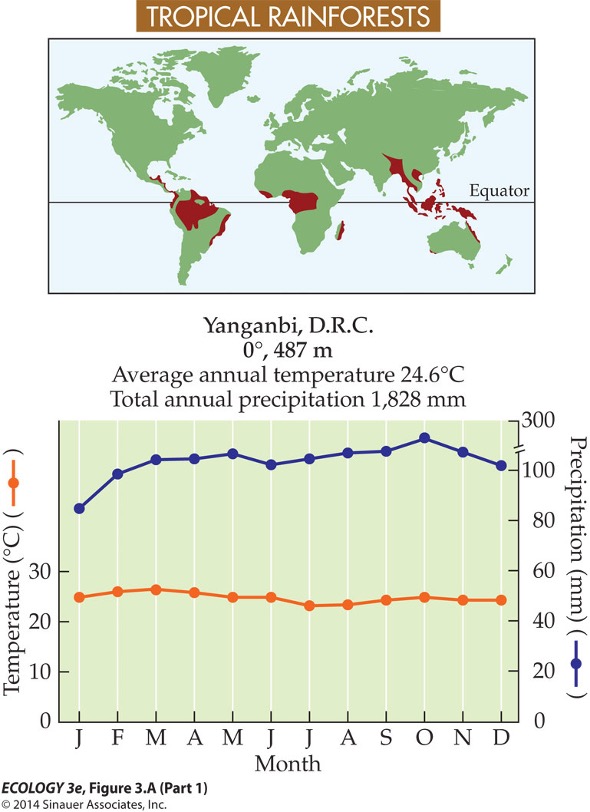
Dominant canopy plants: broad-leaved evergreen trees
Also epiphytes, lianas, palms, and generally sparse understory
More-or-less continuous growing season
Contain ~50% of Earth’s species & ~37% of terrestrial carbon in ~11% of terrestrial veg. cover
Tropical seasonal forests and savannas

Tropical dry forests
Thorn woodlands
Tropical savannas
Generally smaller-stature trees and more deciduousness than in rain forests
Resource availability, fire & large herbivores help determine the balance between grasses vs. woody species
Pronounced wet / dry seasons
Deserts

Populations of plants & animals are often sparse (owing to resource limitation)
Succulence (fleshy water-storage tissue in leaves, stems, etc.) is common among the plants
Sustained periods of high temp. & low water avail.
Temperate Grasslands

Dominant plants = grasses
Greater temp. variation than tropics
Relatively warm, moist summers & cold, dry winters
Some have sufficient rainfall to support woody veg., but fire & grazers maintain grasslands
Soils rich in organic matter (especially from proliferation of grass roots)
Temperate Shrubland and Woodlands

Winter rainy season (e.g., Mediterranean-type climates – water and temperature conditions for growth are somewhat asynchronous)
Fire is a common feature
Evergreen, sclerophyllous (tough, leathery) leaves are common
Temperate Deciduous Forests
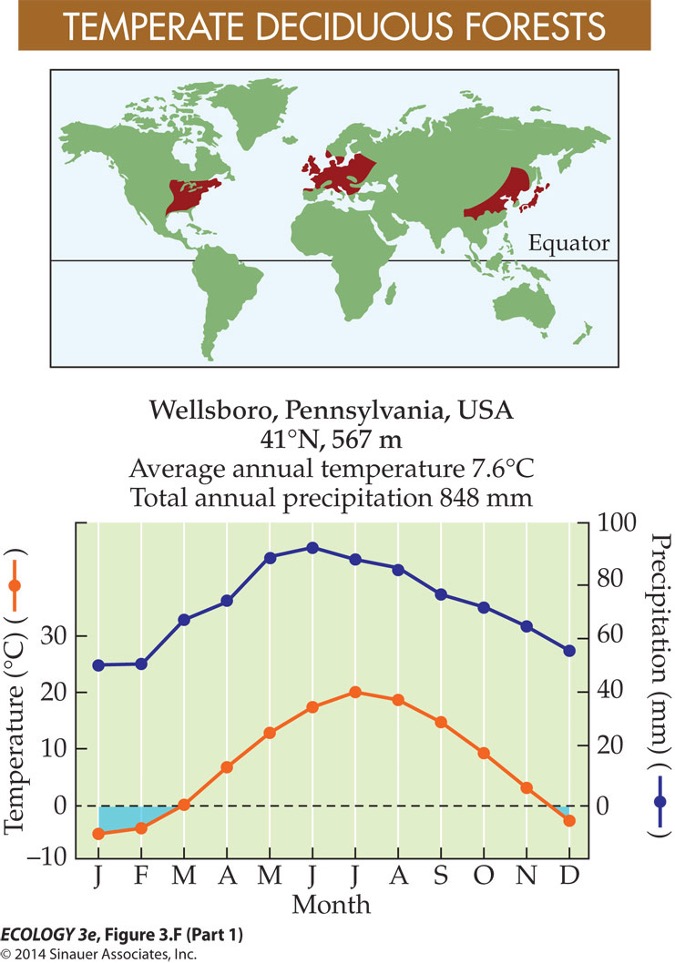
Tree-dominated
Deciduous leaves owing to freezing temperatures
Sufficient rainfall & soil fertility to support tree growth (trees largely outcompete grasses)
Temperate Evergreen Forests

From warm coastal zones to cool maritime or continental climates
Generally on nutrient-poor soils
Northern Hemisphere – needle-leaved conifers
Southern Hemisphere – needle-leaved & broad-leaved trees
Boreal Forests / Taiga

Generally above 50º N latitude
Coniferous tree species in continental climate zones and deciduous birch forests in some maritime zones
Extreme weather
Permafrost common
Largest terrestrial biome, with ~33% of forested land
Immense carbon pool
Tundra
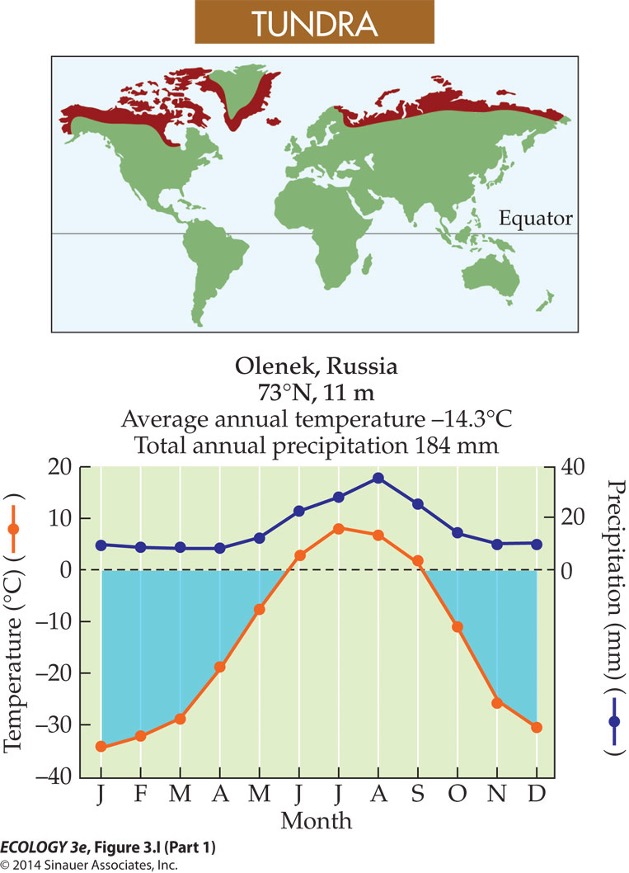
Beyond latitudinal tree line, e.g., above ~65º N latitude
Dominated by sedges, grasses, forbs, lichens, mosses & prostrate shrubs
Primarily in the Arctic
Extreme weather and adaptations for prolonged dormancy
Permafrost very common
